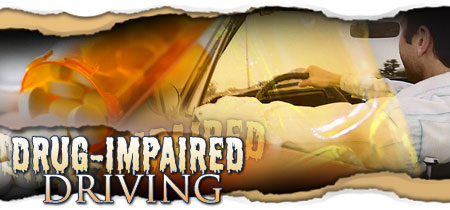
Study Shows Teen Drug-Impaired Driving on the Rise
The
Nation's Drug Czar announced a renewed effort to educate
parents and teens about the driving-related risks of marijuana
use. Joined by the National Highway Traffic Safety Administration
(NHTSA), Students Against Destructive Decisions (SADD),
GEICO and the American Association of Motor Vehicle Administrators
(AAMVA), the Drug Czar cited higher marijuana rates among
young driving crash victims and urged teens to "steer
clear of pot" at the start of National Drunk and Drugged
Driving (3D) Prevention Month.
"Unfortunately,
many young drivers don't yet understand the risks associated
with marijuana and driving," said John P. Walters,
Director of National Drug Control Policy. "Marijuana
impairs driving and leads to risky decisions. Parents of
new drivers can use the milestone of earning a driver's
license to discuss the dangers of marijuana and being responsible
behind the wheel-before they hand over the car keys."
"Teens'
inexperience on the road and risk-taking behavior, combined
with drug and alcohol use, is a recipe for disaster,"
said NHTSA Administrator Jeffrey W. Runge, M.D. "As
we look back at a year marred by several high-profile teen
crashes and fatalities, we are reminded that we still have
a lot of work to do to steer new drivers in the right direction."
Results
of an ongoing study at a large shock trauma unit found that
one in six (17 percent) crash victims tested positive for
marijuana. These rates were higher among the younger crash
victims with 19 percent under age 18 testing positive for
marijuana (Epidemiology of Alcohol and Other Drug Use Among
Motor Vehicle Crash Victims Admitted to a Trauma Center,
2004).
Recent findings published in the Journal of Studies on Alcohol
show that high school students are more likely to drink,
smoke cigarettes, and smoke marijuana during the period
immediately after earning their drivers' licenses and their
driving behaviors become riskier with more driving experience.
Teens
are just as likely to drive under the influence of marijuana
as alcohol. According to Monitoring the Future data, approximately
one in six (15 percent) teens reported driving under the
influence of marijuana, a number nearly equivalent to those
who reported driving under the influence of alcohol (16
percent), despite higher prevalence of alcohol consumption
among teens.
Additionally, only 18 percent of teens cited "planning to drive" as a top reason to not use drugs in the SADD/Liberty Mutual Group Teens Today 2004 report released earlier this week by SADD. Nearly twice as many (30 percent) cited "planning to drive" as a reason not to drink.
Marijuana affects concentration, perception, coordination, and reaction time, many of the skills required for safe driving and other tasks. These effects can last up to 24 hours after smoking.
Greater parent involvement, clear rules, and parental supervision are associated with less risky teen behavior, such as marijuana use and driving while high or under the influence of alcohol. This year's SADD/Liberty Mutual Group Teens Today 2004 report found that nearly 60 percent of teens who drive say their parents have the most influence on their driving, followed by 27 percent who say their friends are most influential. In addition, one in three high school students in the survey reported they "want to" or "need to" spend more time with their parents.
The National Youth Anti-Drug Media Campaign and its partners will raise public awareness on the issues of drugged driving and the harmful effects of teen marijuana use through the promotion of free "Steer Clear of Pot" materials; new Web content on The Anti Drug and Free Vibe a drivers' safety kit for teens and parents; and partnerships with GEICO, SADD, the AAMVA, and others to distribute drugged driving and marijuana prevention materials to drivers' education teachers, teens, and parents.
SADD, a national peer-to-peer youth education and prevention organization, will help distribute teen materials through its estimated 10,000 middle school, high school, and college SADD chapters nationwide. And, AAMVA will distribute materials to state officials and to DMVs across the nation.
GEICO, the fifth-largest private passenger auto insurer in the United States, unveiled a new DVD that promotes safe driving and responsible behavior that will be distributed to policyholders who have new teen drivers in the family. In addition, GEICO has incorporated the Media Campaign's messages into its existing "Can I Borrow the Car?" teen driving and safety materials and will also provide co-branded versions of those materials through the Campaign's "New Teen Driver Kit." Overall, the company will distribute co-branded Steer Clear of Pot materials and promote the Media Campaign's resources to its 5.5 million policyholders and 22,000 GEICO associates.
Since 1981, every President of the United States has demonstrated his commitment to preventing impaired driving by proclaiming December as National Drunk and Drugged Driving (3D) Prevention Month. Stopping impaired driving requires a commitment from communities nationwide. Throughout 3D Month NHTSA cautions the public not to drive impaired by alcohol or drugs and encourages the use of sober designated drivers.
In 1998, with bipartisan support, Congress created the National Youth Anti-Drug Media Campaign with the goal of educating and enabling young people to reject illicit drugs. The Campaign is a strategically integrated communications effort that combines advertising with public communications outreach to deliver anti-drug messages and skills to America's youth, their parents, and other influential adults.
Source: National Youth Anti-Drug Media Campaign |